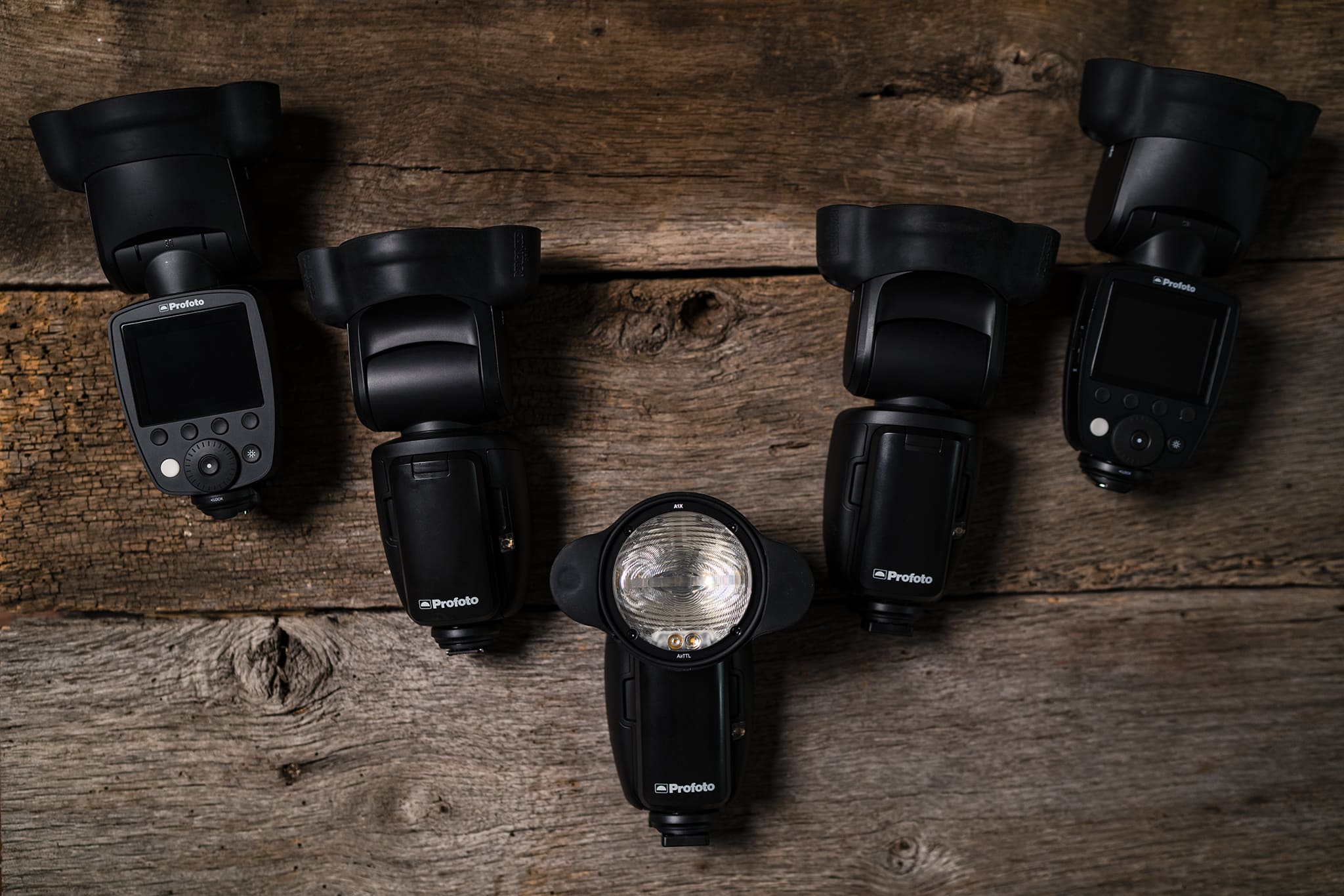
May 31, 2019 / For Photographers Gear Review
Profoto: Why I Switched from Godox, and Why I Have Zero Regrets
Light, compact, consistent. Three of the key ingredients for a great light for a traveling wedding photographer. For me, I need to know my gear, regardless of what it is, is going to simply work. If there’s any hiccup, I could miss moments my clients are entrusting me with. And, as I incorporate flash in to almost every facet of a wedding day, the lights I use are extremely important. The Profoto A1X is all of those things, but let me share why it’s MORE than those things, as well.
I’m speaking from the perspective of someone who’s used a fair amount of flashes in the market. Canon, Nikon, Yongnuo, Godox, Interfit…you name it, I’ve probably used it in one way or another. Before I played with Profoto lights, I was in the camp that light was light. It didn’t matter what flash I used, if it fired, it was fine. If it fired consistently, even better. Through this, I’ve never found a system I actually loved using. They all had their quirks, their infuriating moments for one reason or another. Frankly, they were all a means to an end.
Enter the Profoto A1X. Get ready to meet your new favorite piece of lighting. Not only does it provide a means to an end, but it provides an invitation to take your creativity to the next level. And, just as the Sony A9 revolutionized the way I photographed weddings, the Profoto A1X is taking my lighting game to a level I didn’t imagine possible.
Full disclaimer: I am not an ambassador of Profoto. I purchased all of my gear from Midwest Photo Exchange. Hit them up for your own gear needs! My opinions are my own, and in no way influenced by anything other than my experiences with the gear.
FAST STATS FOR THE PROFOTO A1X
- Built-In AirTTL, useable on or off camera
- Fast, 1 second recycling time
- Upgraded battery: 450 Full Power Flashes
- LED Modeling Lamp
- High-Speed Sync
- 9-Stop Power Range
- 76Ws Output
- Total Weight: 1.2 lbs including battery
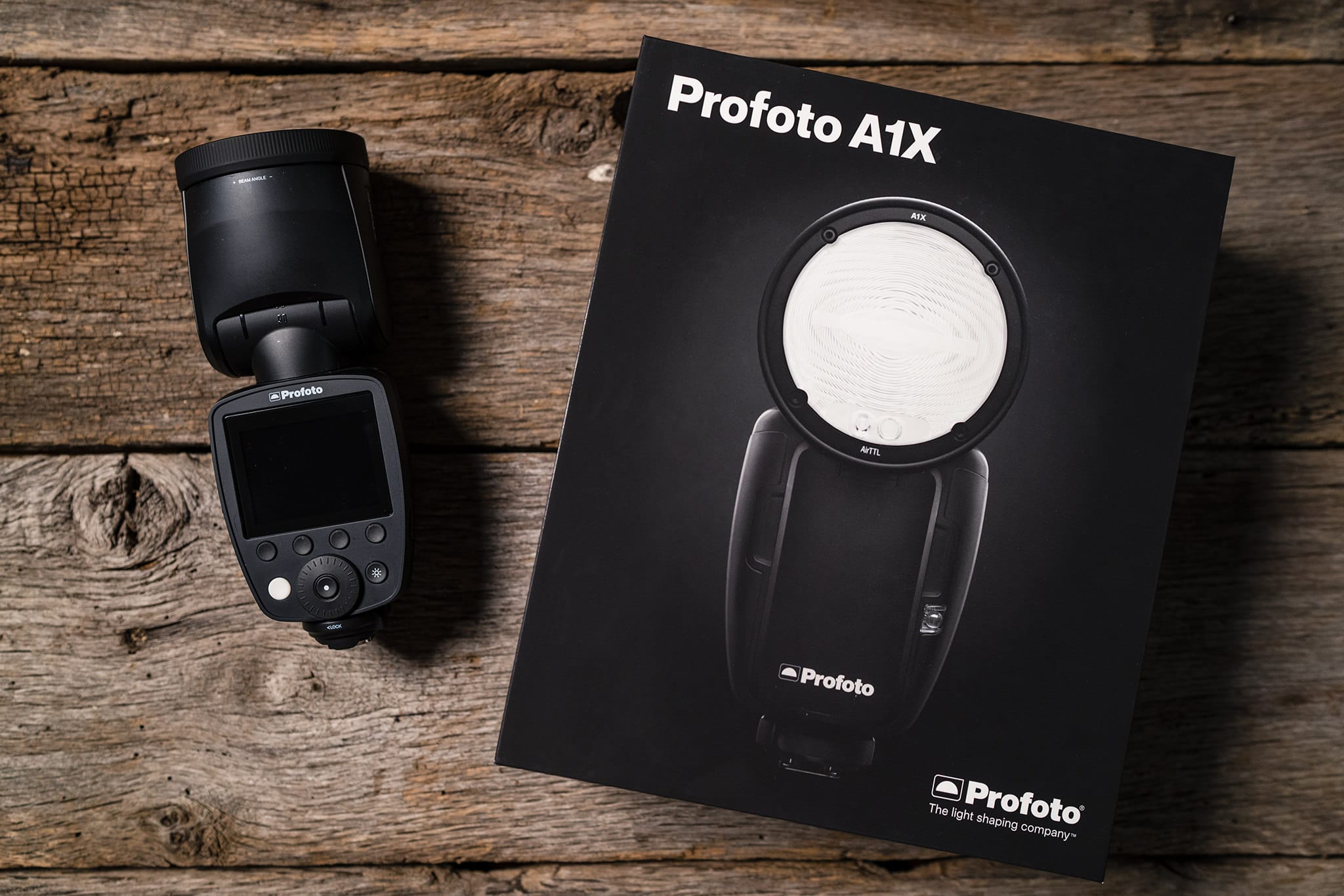
PROFOTO A1X: UNBOXING
I’m a huge sucker for well done products, and that includes well done packaging. Profoto has this perfected. From the soft-touch boxes, to the inside congratulating you on your purchase (which, let me be honest, I needed reinforcement on this. These A1Xs aren’t cheap.), to the A1X bag that holds the flash and its accessories, no detail was left out. I caught myself grinning as I read the message in the box, and unboxing the lights was honestly really fun. It felt like Christmas had come early. And, once the lights were out, I wasn’t disappointed. The unboxing was just the start of the fun.
The flashes come with a soft padded zippered pouch. Beyond holding just the flash, it has an interior pouch that can hold the Profoto magnet attachments. Additionally, Profoto provides you with the diffusion dome and bounce card with the flash, so you have options right out of the gate for flash modification.
Beyond the additional accessories, each flash comes with a flash stand, USB cable, shoulder strap for the bag, and a charger. Profoto makes sure you have everything necessary to open the box and get moving with their lights, and I love that.
RATING: 10/10
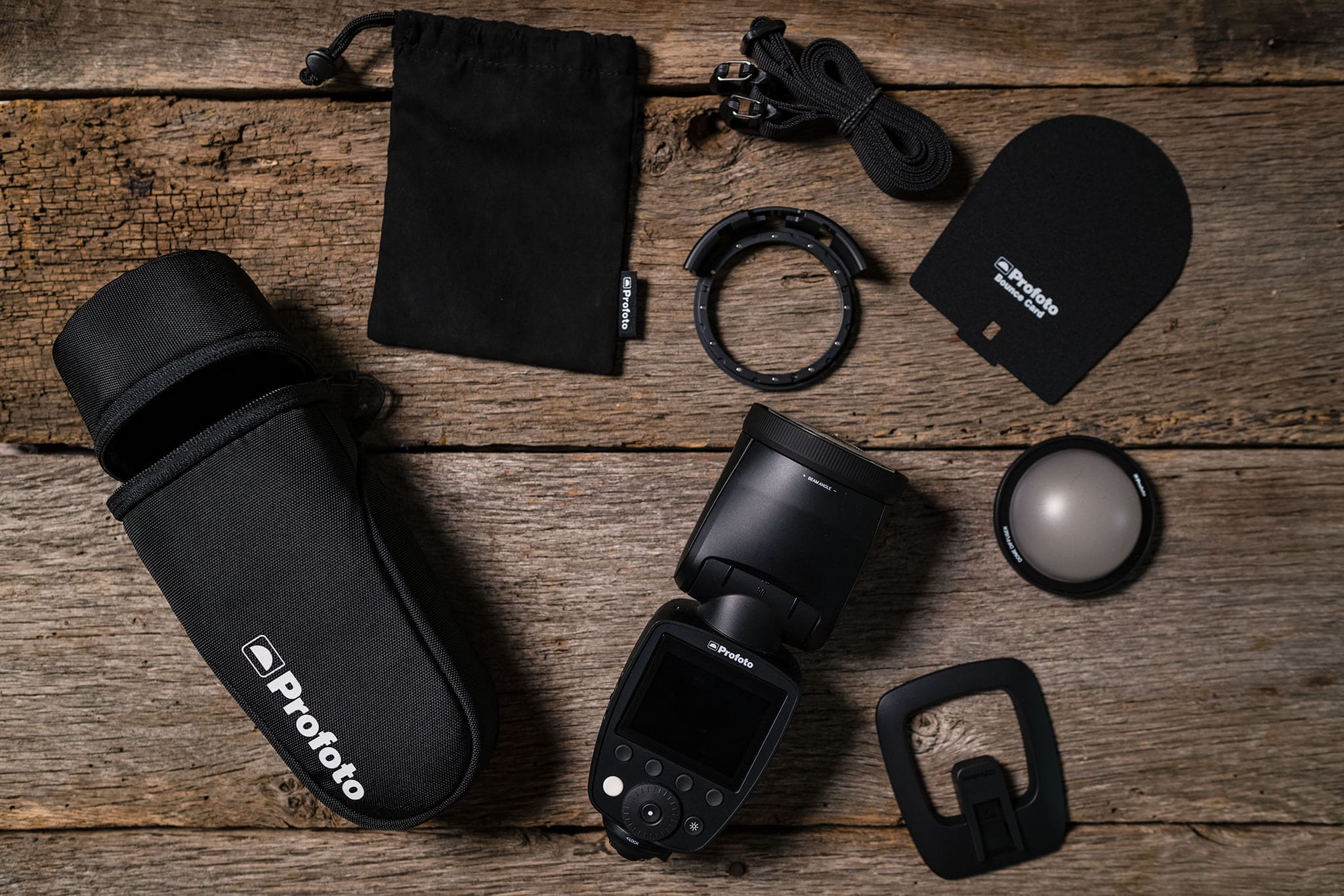
PROFOTO A1X: ERGONOMICS
One of the things I really enjoy about the Profoto A1X is its undeniable ease of use. It reminds me of Apple products, in the sense that the interface is easy, intuitive, and things just work. Straight out of the box, I was greeted with a much simpler layout than any of my other flashes ever had.
Instead of a multitude of buttons with little acronyms and signs, I was greeted with a simple layout with no indicators at all. It felt off at first; almost like the first time I picked up an iPhone. Intuitively, I pressed the only button that stood out — the white one — and as greeted with a screen that read, “Unlock,” and a photo of the click wheel. One word, one instruction, light effectively turned out and ready to go.
That’s simple.
I quickly hopped into the menu settings, and again, the ease of use and clarity was a welcome change. No crazy sub-menus to dig through to find something. No confusion. It just works. In less than a minute I had my settings changed to my desired ones, had my remotes ready to go, and started to mount them into my MagShoes. In two minutes, I was ready to go, never having to even read a manual. It’s simply intuitive, simply works.
And as if the soft black matte box was any indicator, the A1X also has the same soft touch and brushed black finish. It’s almost identical in weight to my other flashes (within a tenth of a gram), and it fits well in my hand. Overall, the ergonomics and ease of use makes this flash hands down the best flash I have ever used.
RATING: 10/10
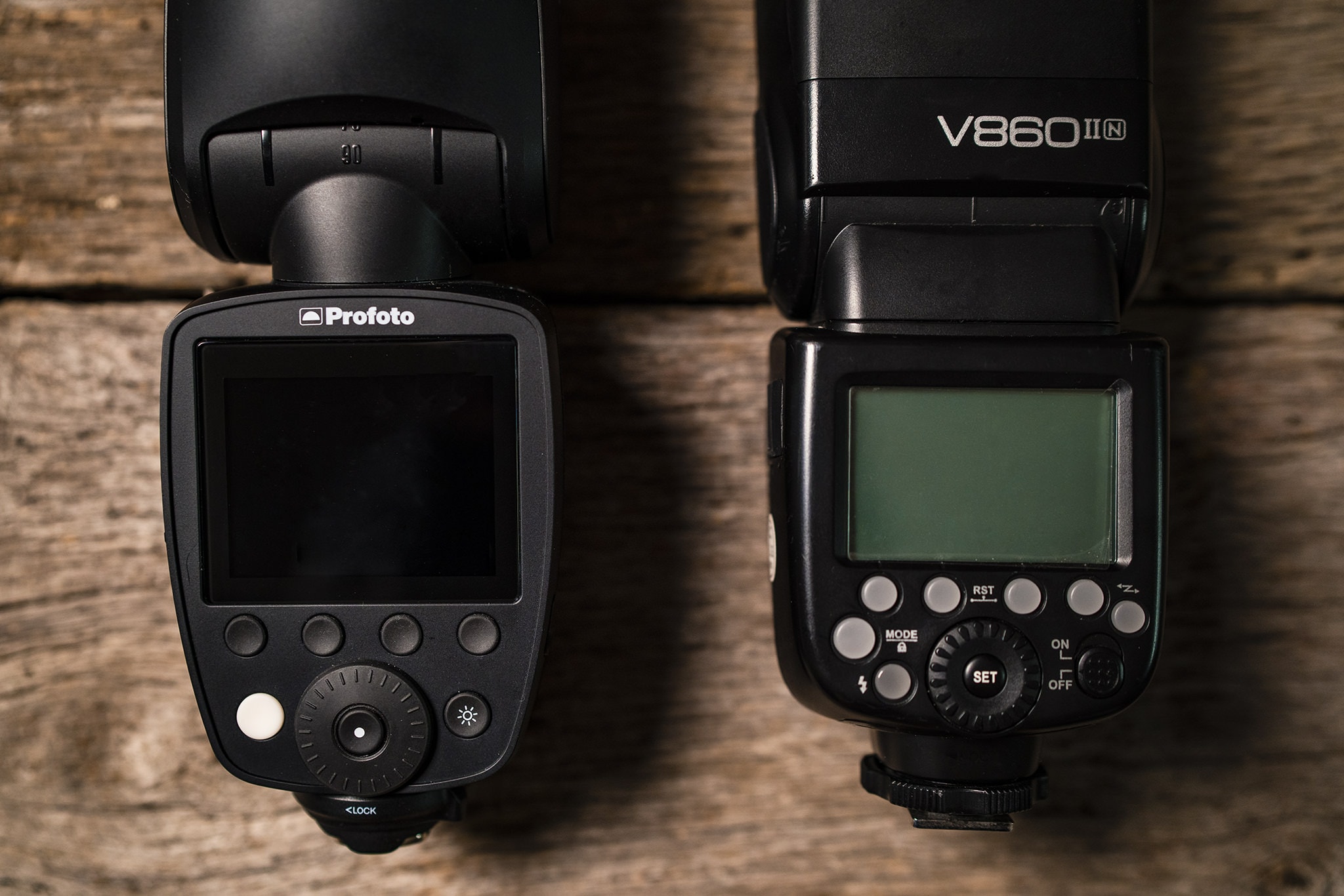
PROFOTO A1X: BUILD QUALITY
This is where the A1X really shines. Or, perhaps it’s simply because I have been using a product that sure, it does the job, but it isn’t necessarily the best-made product in the world. Or, maybe it’s a mix of the two. No matter what, all I can say is that the Profoto A1X FEELS like a fantastically built product, behaves as such, and I’m beyond impressed with its performance.
A perfect example of this is the locking mechanism and hot shoe mount. On other brands, the mount is clearly flimsy and clearly top heavy. Instead of having a mount that is tall and prone to break, Profoto opted for a mount that is well designed and close to the main body of the flash. Additionally, it has a locking mechanism that is far more reliable than the twist design of other flashes. Before, I twist and hope for the best with the security. And, sometimes at the end of the night, I’d have it completely untwisted and still the flash would not unhinge from the mount. This isn’t the case for Profoto. With the Lock being a simple twist that clear and has a definitive end point, there’s no concern for over stressing that mount by accident. Win!
And, adding in an aside that’s related but not directly so, I’ve personally broken a Godox remote right at the hotshoe mount precisely because of the poor build quality and longer neck of the attachment. Again, with the Profoto Air-TTL Remotes, the neck is far shorter and alleviates the concern by a significant amount. These are things I never thought I’d take into consideration, but after watching friends break Godox flashes at the mount, and myself having this happen with a remote, I very much appreciate a solid build that will take some of the chance of breaking away.
Beyond just the mount, everything about the Profoto shines with quality. There has been talk of how they hold up with MagMod modifiers attached, and I can say that they hold up perfectly fine. The angle clicks hold up with the additional weight, and while it’s not perfect, the MagMod modifiers do add weight that Profoto wasn’t necessarily designed for. And, for me, I will continue to use the MagMod system for a few reasons, one of which is simply that it works beautifully, as well as the fact that I’m invested in it.
Since everything works seamlessly with the round head, I have no need to change my system, and the Profoto head holds up to the additional weight quite well, considering. You’ll probably have it sink a few clicks at some point, but that’s to be expected. I don’t dock points from the Profoto for that, as every flash I’ve ever owned that does not have a locking click on the angles will sink under the weight of modifiers.
RATING: 10/10
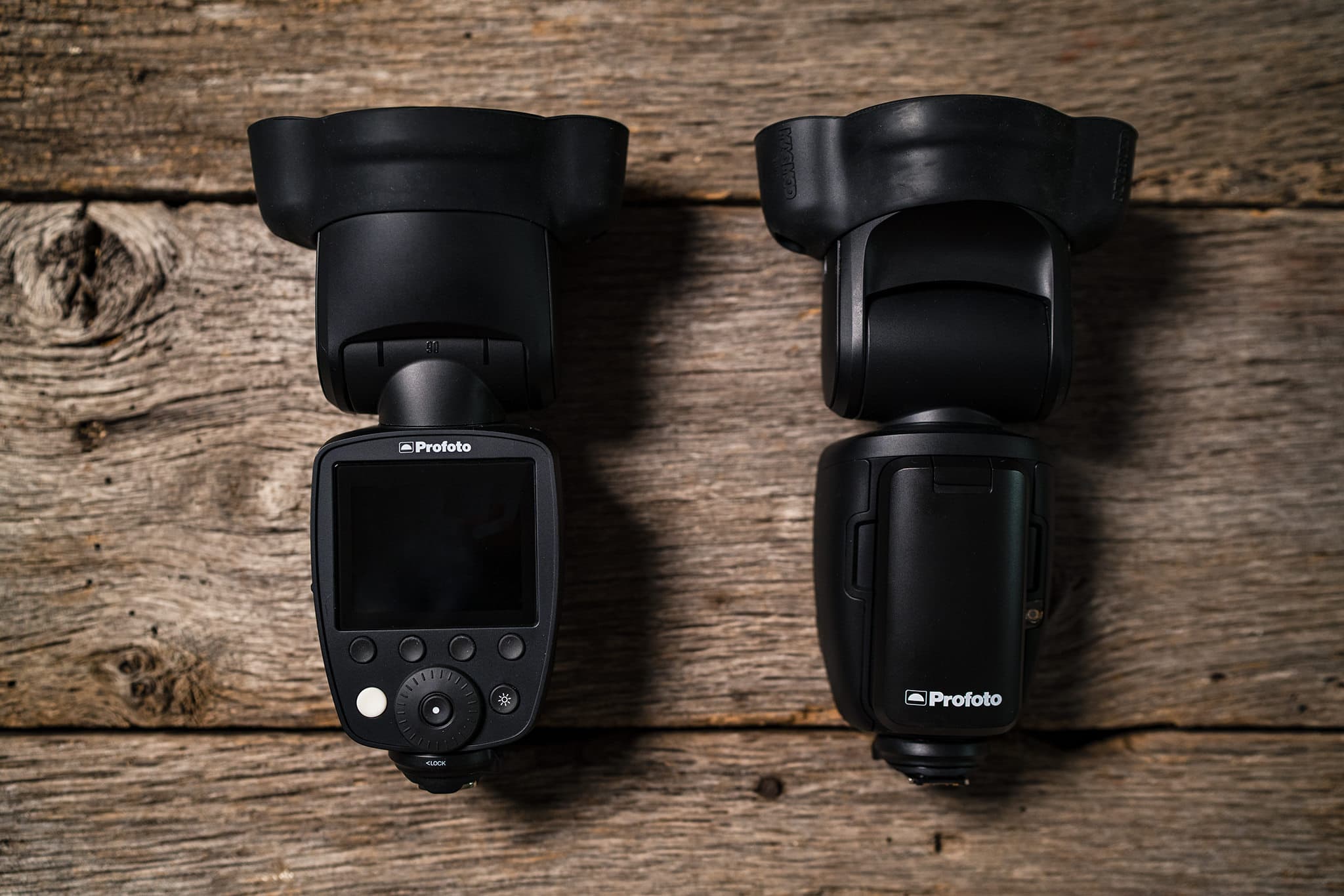
PROFOTO A1X: IN THE FIELD USE
Now, this is where it gets fun. It’s no secret that I absolutely love playing with new gear, and jumping into using the Profoto system was an absolute blast.
One of the most frustrating things about any of the lighting options I’ve used in the past is consistency. It’s simply not there. When using Nikon flashes with my Nikon cameras, there were the annoyances of triggers and receivers. The combination was clunky and added time to my set up. Nikon offered a Wi-Fi option, but it only worked with the D5, not in tandem with the D750, which I also used. With Yongnuo, I was freed from the receivers and they worked with both the D5 and D750. It also cut down on my setup time, which I loved. However, when I transitioned to dual photographing with Nikon and Sony, I couldn’t cross shoot with the two systems simultaneously. Again, I found myself in a situation where the flashes weren’t meeting my needs.
That’s when I found Godox, and I thought I’d found the lighting setup that would work for me. No additional receivers necessary, would cross-platform shoot, and hey, they’re cheap. Win! I went all in, and for a good while, things were fine. Light was light, everything functioned. For the most part.
But then the fall from grace. The Godox started becoming unreliable. At first, it was intermittent. Enough to make me wonder if something was up, but not enough to cause concern. I wasn’t missing key photos, so it was frustrating, but not infuriating. However, it became an increasingly growing issue. Multiple misfires at extremely low powers. Light groups being turned off but firing anyway. Other light groups being turned on, but not actually firing. All groups firing at full power for no reason. I even managed to melt the entire front of an AD200 during a Persian wedding entrance with little effort at all. It became so bad, that I was afraid to take them to weddings.
How could I trust my gear to capture the moments my clients entrusted with me, if I couldn’t trust my gear to do its job? At the peak of this issue, it was conveniently time for WPPI. I had seen the advertisements for Profoto, but I felt that light was simply light, and thought there was no way that a light priced higher than anything else on the market would be that much better.
I was wrong.
From the start of my connection with the amazing people at Profoto, I was a skeptic. A massive one. I wanted to believe it, but I also really didn’t have much faith in the fact that it would be true. However, Susan and Cliff, the incredible people working at WPPI, chatted with me multiple days and went over everything with me. And, at the end of our time, I wound up having the opportunity to try out a Nikon Profoto A1 with a Sony Air-TTL remote. From the moment I used that light in the first wedding situation, I was hooked.
Hooked on the insane quality of the light. On the beautiful, clean falloff. On the color consistency. And, oh my goodness — the fact that they WORKED. I can fire the Profotos time and time again, and they barely miss a beat. I couldn’t believe how easy the system is. How intuitive the interface is. And how utterly fantastic the recycling rate is.
These lights simply work. They’re consistent, reliable, and the quality is undeniable. And that’s all I could possibly ask for in a flash.
But don’t take my word for it. Check out the screen shot below. In forty photos, there were two misfires. Two. I’ll take those odds any day.
Beyond just the consistency of the lights in all facets, the battery life is something I absolutely have to champion. I’m a huge fan of backup batteries. I always carry multiple backups, as well as a charger or two, just in case. I will still always do that, but I have to say, in the three weddings I’ve used the Profoto lights, I’ve not managed to drain a battery yet. Not on the B10s, not on the A1Xs. The battery power is absolutely incredible, and they can stand up to my incessant use — that’s saying something!
However, I will be the first to admit, it wasn’t without its quirks.
After using the Nikon A1 with the Sony Air Remote, I picked up a couple B10s of my own, in hopes of a Sony A1 variant coming in the future. Then, I was able to pair them up for a wedding with two Nikon A1s for my first foray into a wedding with full Profoto. Let me tell you, it was amazing.
I couldn’t have asked for a better time to have consistent flashes. I couldn’t get over how seamlessly they were working, until I realized that the remote was unseating itself from my A9. In the middle of moments, my EVF screen would flip back to non-flash, confusing me. I’d wiggle the remote, and the flash would come back to life. I’d also get a notification that the remote wasn’t compatible with the camera, but I’d toggle it away, and the remote would fire even after the little notification. I quickly realized I’d need to hold my remote in the hot shoe just right so that the connectors would remain where they needed to be. When connected, the Profotos never missed. However, this odd hiccup was very nerve-wracking. Because moments are fleeting, and I wanted to be sure I could trust the system to work seamlessly all the time.
After speaking with a few people who had also used Profoto in tandem with Sony, and they all said the same thing: The Sony A9’s hot shoe, for whatever reason, doesn’t play well with the Profoto Air Remote. It’s odd. However, when paired with the A7RIII (in my experience) and the A7III (In my colleague’s experiences), the connection is flawless. I never had a message of incompatibility, and I never lost connection with the A7RIII. With this in mind, I made the mental shift to focus on shooting with the A7RIII while using flash. Which, curiously, many of my colleagues have said is their preferred Sony camera for OCF, anyway. When I reached out to Profoto about this phenomenon, they were quick to replace my remotes and get me set up with new ones. Since then, I haven’t had any issues with the A7RIII, and only once has the A9 lost connection.
Additionally, my other qualm with the system is with the Air-TTL remote. While it’s beautifully seamless and works like a charm, it’s missing one key thing: my ability to see the power output of the flashes on the remote itself.
While I can adjust the power of the flashes, the remote doesn’t tell me the final power output. It just indicates the power I’ve dialed it up or down. If I modify the light a few times, it’s easy to forget where you started. So, in turn, you can forget your output pretty quick. It’s a bit annoying, especially when considering that the Nikon and Canon variants do display the power output. While I’m not sure what the difference is, I hope it’ll be remedied in a future remote. I love everything about it otherwise, but knowing the power output would be infinitely helpful.
However, I will say, an interesting workaround to that is the fact that the Profoto is wildly accurate when it comes to TTL. One of the ways to avoid the tinkering of the lights and forgetting your power is to start in TTL, and get your initial reading of where you should generally be. Then, once you’re there, you can do slight modifications that aren’t as extreme. While not perfect, it does get you in the ball park much quicker, and I’ve been impressed by the TTL thus far.
RATING: 7.5/10
(docked for lack of information on the remote, as well as the intermittent connection issue with the A9)
PROFOTO A1X: LIGHT QUALITY
Before I played with the Profotos, I was firmly in the camp that light was light, and if you had a flash, it was interchangeable with pretty much any other flash on the market. I also didn’t really believe the hype that a round head flash would render drastically different results than a rectangular one. For me, I just wanted to light quickly and efficiently.
Which is why the shift in the light quality with Profoto surprised me. It’s subtle, I’ll give the doubters that. And, sure, you can use modifiers to achieve the look of a round head to a degree. However, I’ve said this many times, and I’ll say it until I’m blue in the face: I don’t know what they’re doing over at Profoto, but they are making a light that very nearly needs no modifier to achieve beautifully soft results — something I’d never dream of don’t with a Godox AD200 or v860ii.
When Profoto provided my first test A1, and when I told them I’d purchased a B10, they gave me the same request: use the lights without a modifier first to see what it was capable of. I think I probably almost laughed at Susan when she said it. (sorry, Susan. You know I adore you.) Not use modifiers? Do they know who they’re talking to?!
But I tried it. And I was floored.
The softness of this light is unbelievable. There has never been a time that I’ve ever used a light for portraits without a modifier of some sort before using these lights. Since getting my hands on the B10 at first, and now the A1Xs, I’ve been photographing family formals with the B10 bare flash, and the way that the light softly wraps around the subject is truly unbelievable. I can photograph groupings up to 8-9 people with one B10 and feel comfortable with the light quality. It’s just absurd.
And, when it comes to the A1X, it’s also absurd just how beautiful the light is. Usually during wedding receptions, I will use four lights with MagMod MagSpheres and MagGrids attached for first dances, 1-3 in various locations for speeches, and then I’ll have one I move around the reception with during open dancing. Now, I’ve all but stopped needing the MagSpheres, thanks to the softness of the light. I still use the MagGrids and will continue to do so (along with the other MagMod products), but I am continually floored by just how beautiful the light is from the Profoto lights.
Additionally, I cannot express just how much I love the reliability of the Profoto lineup. I know that isn’t directly correlated to the light quality, per se, but the faith I have in the recycle times and the system simply working is such a refreshing feeling. I had come to the point that I was praying my lights would listen to what I was telling them to do. Now I know without a doubt I am in good hands, and I am more than happy to pay for the peace of mind that Profoto provides me in every facet of a wedding day.
RATING: 10/10
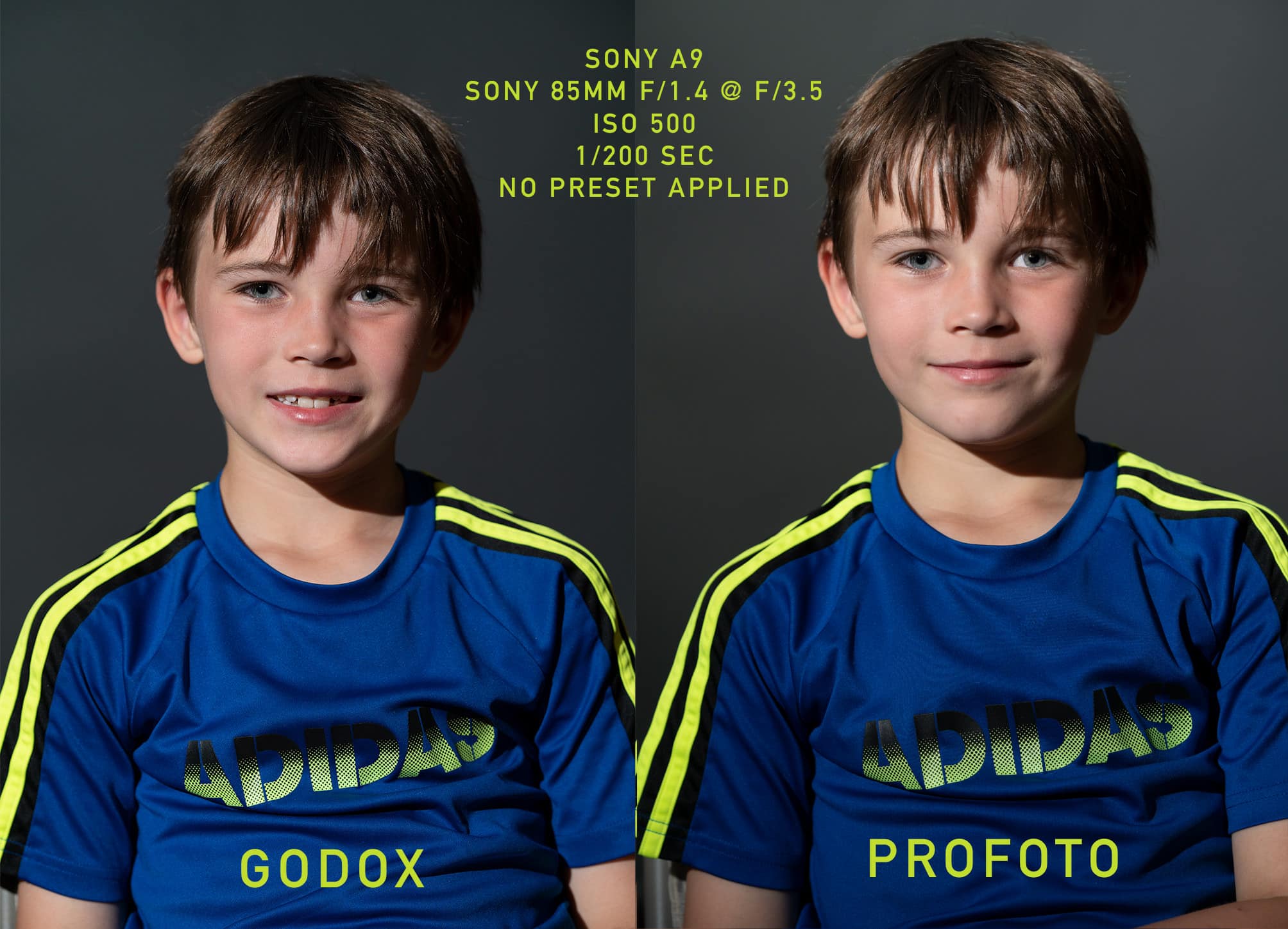
PROFOTO A1X: FINAL VERDICT
So now that we’re at the end of this novel, what do I say? I think the thing I keep coming back to more than anything with the Profoto lights is the fact that I really wasn’t convinced I would believe the value was there. However, if you asked me to photograph another wedding with any other flash system, I’d side-eye you out of the room at this point. I’m simply that in love with this system. It’s not about the light itself being superior to any other light on the market — though personally, I prefer it. It’s not about the fact that I can get away with using little to no modifiers on the flash and make gorgeous portraits — though that’s amazing. And, it’s even about the fact that the reliability is comparable to a perfectly refined Swiss watch — though anything less would disappoint me now.
No, while all those things are huge factors to why I love Profoto, I’ll tell you the thing that sells me above all else: their people.
I’m not kidding. Their product is absolutely incredible, and I’ll circle back to that. However, for me, I am an extremely relational person, and I also believe in investing my dollars in places that I can believe in their mission and the people behind the product. I cannot explain how incredible the Profoto folks have been, even before they ever earned a dollar from me. Through WPPI, as I touched on, Susan and Cliff took care of me and answered my thousand skeptical questions. Then, I was given the opportunity to take an A1 into the field to try it “for real.” But, what I hadn’t mentioned was the fact that on that wedding day, I incorrectly set up my settings on my camera side, but couldn’t figure them out to get everything to work seamlessly. I texted Cliff, thinking I’d probably hear back Monday. And that would have been totally fine.
No, Cliff called me not fifteen minutes later to kindly explain the process again. But, as I said, I was at a wedding, so I couldn’t talk. I gave my phone to my assistant, and Cliff proceeded to explain everything to my assistant, who is NOT a photographer. He gave such clear instruction that not only did Keano learn how to set up the system on my Sony camera AND the Profoto light in under 10 minutes, but he then taught me. Cliff didn’t have to take the time to do any of that, but he did. And the rest of the day the Profoto worked seamlessly…and that was the first day that I knew the Godox lights were going to go from sitting in my bag, to not even being in my gear list at all. It was clear that Cliff cared, and that means a lot.
Then, beyond that, Susan has been incredible as I navigated my decision to make the jump. Investing in Profoto isn’t cheap, which is something they understand. I never once felt pressure, just true excitement about them sharing a product they knew was awesome. That’s huge.
Finally, before I made the “big” jump of purchasing all of my A1Xs, Susan introduced me to Eric, my area’s representative. He has been super awesome, and we even got to meet for coffee! It’s been wonderful getting to chat with them and get to know them, and it excites me even more to use their products when they’re invested in building relationships that go beyond the transaction.
However, I also know that if you’ve made it this far, you want my final thoughts on the product itself. Simply put: the A1X and B10 have allowed me to feel far more confident in my lighting, and when you feel confident, you make better photos. The confidence I have in these lights to simply work is profound. The confidence I have in the beautiful light quality right out of the flash is something I’ve never experienced before. And, the confidence I have that if I do encounter an issue, that it’ll be met by a real person and resolved is worth so much. Peace of mind is everything. And I’m happy to invest in a product that not only works, but works so impeccably well, you never have to think about what you’re doing.
One other big question I’ve received is, “Will you/Can you use MagMod on the Profotos?” The answer is a resounding yes. Being a MagMod Ambassador, I went in knowing that if I couldn’t use their products on these flashes, I wouldn’t make the switch. However, the MagGrips fit just fine around the round heads of the A1Xs, and MagMod even made sure to make adapters for a whole host of companies to make their new MagBox compatible. I actually just used the B10 and the MagBox in tandem on a headshot client a couple days ago, and it worked like a dream. So for those of you wondering, yes, all of the MagMod products still work, and they work seamlessly. You’re good to go!
Overall, I’m honestly just still so in love with the recycling rate and the fact that when I turn them off, they stay off, and when I tell them a power, they only fire on that power output. It’s the simple things that really matter, and it transcends the light itself, even though obviously this is a light. For me, peace of mind is everything, and Profoto has provided me with that on so many levels. Can you find cheaper flashes on the market? Yes. Have I ever experienced any kind of support or quality like I have with Profoto? Absolutely not. You get what you pay for — in many ways. And with Profoto, you will absolutely get your moneys worth in all facets. If you’re on the fence with these fantastic products, I encourage you to try them out! It’s been a huge game changer for me, and I’m so excited to walk into a wedding feeling confident in my lighting choices. This is one of the best investments I’ve made in gear, and I have zero regrets.
FINAL SCORE: 9.5/10
PROS
Build Quality
Light Quality
Customer Service
Reliability
Intuitive Interface
Portability
CONS
Price
Air Remote Needs Work
Need to Learn the New Non-Fraction Power System
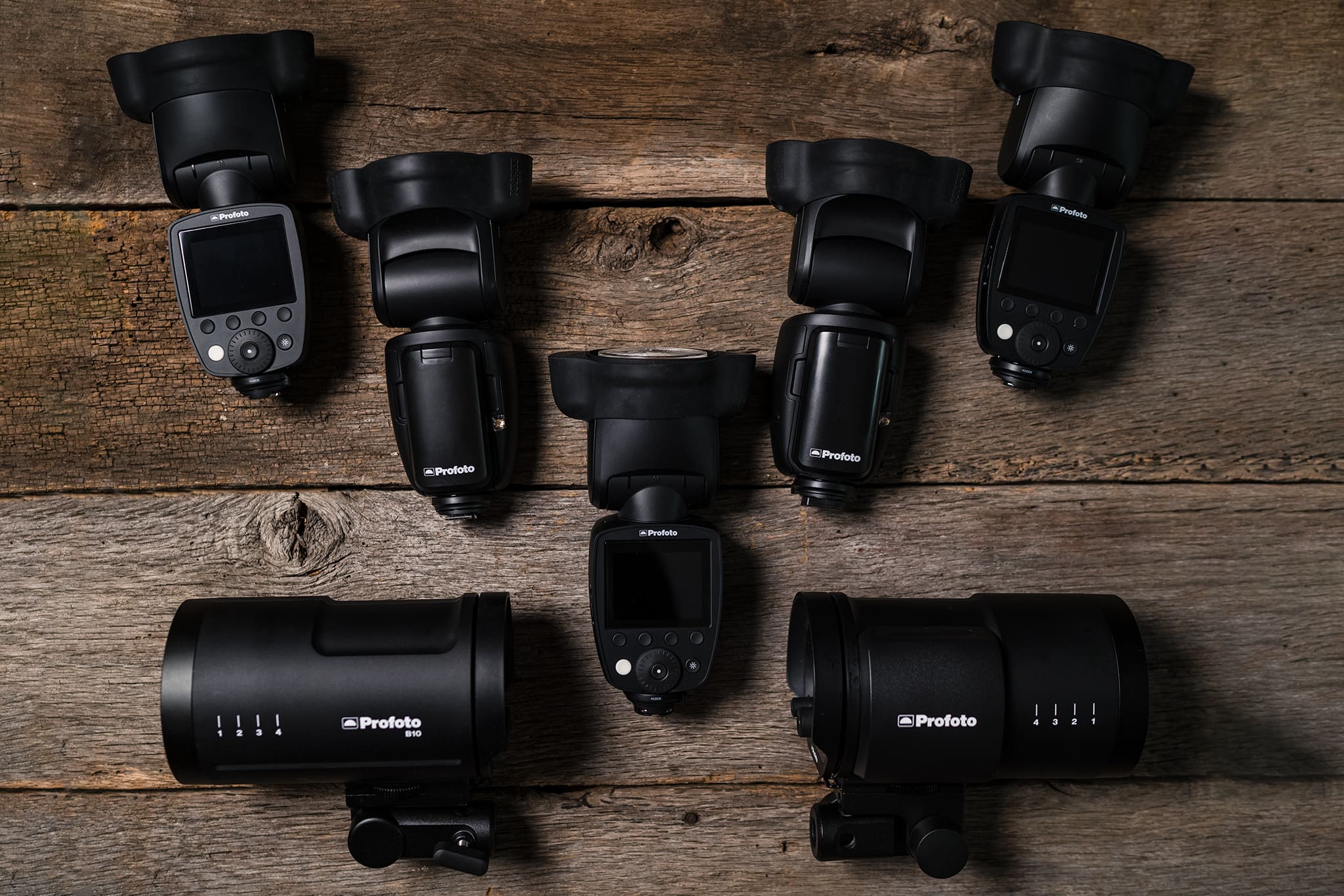

PROFOTO A1X SAMPLE IMAGES
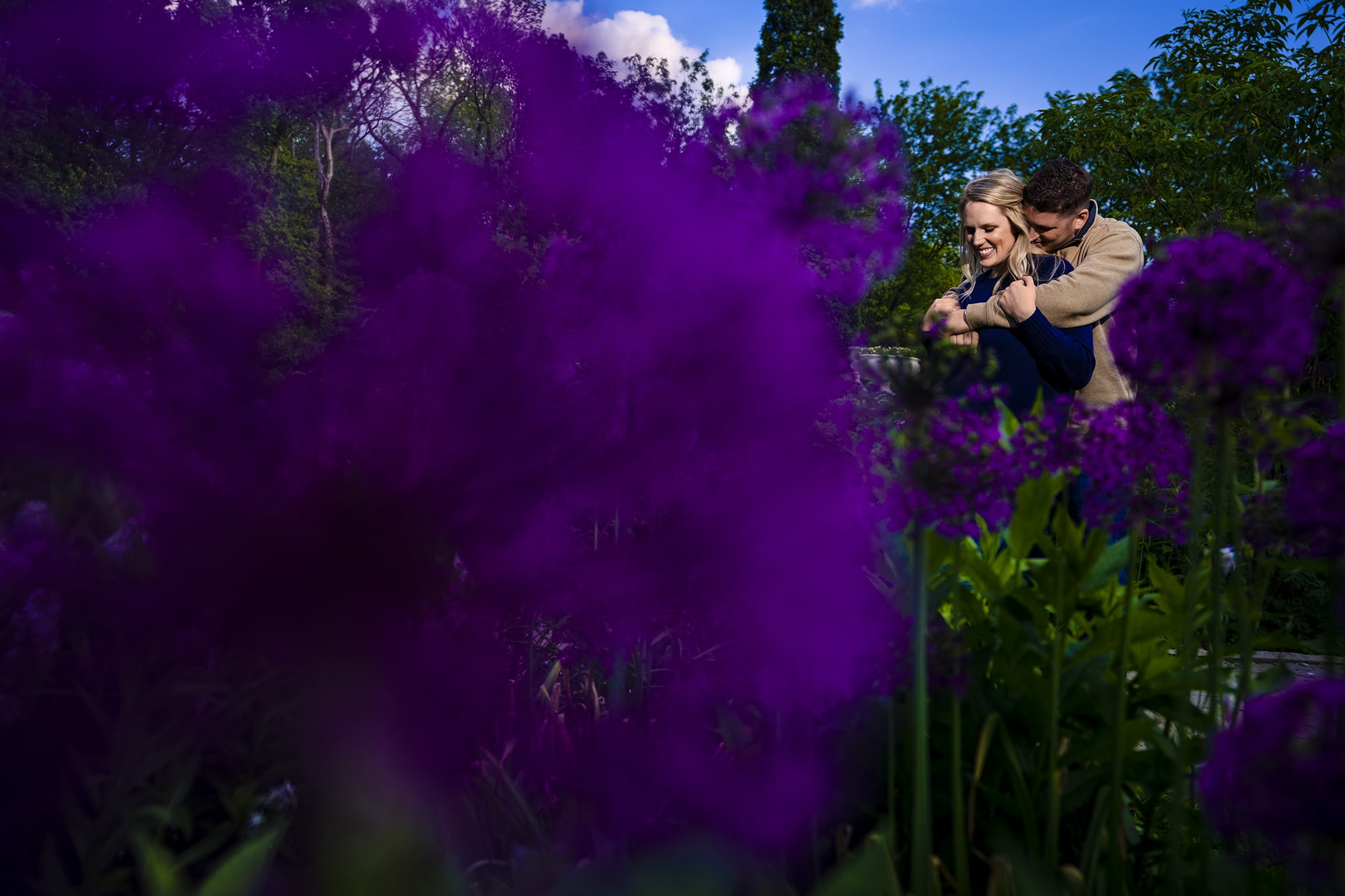
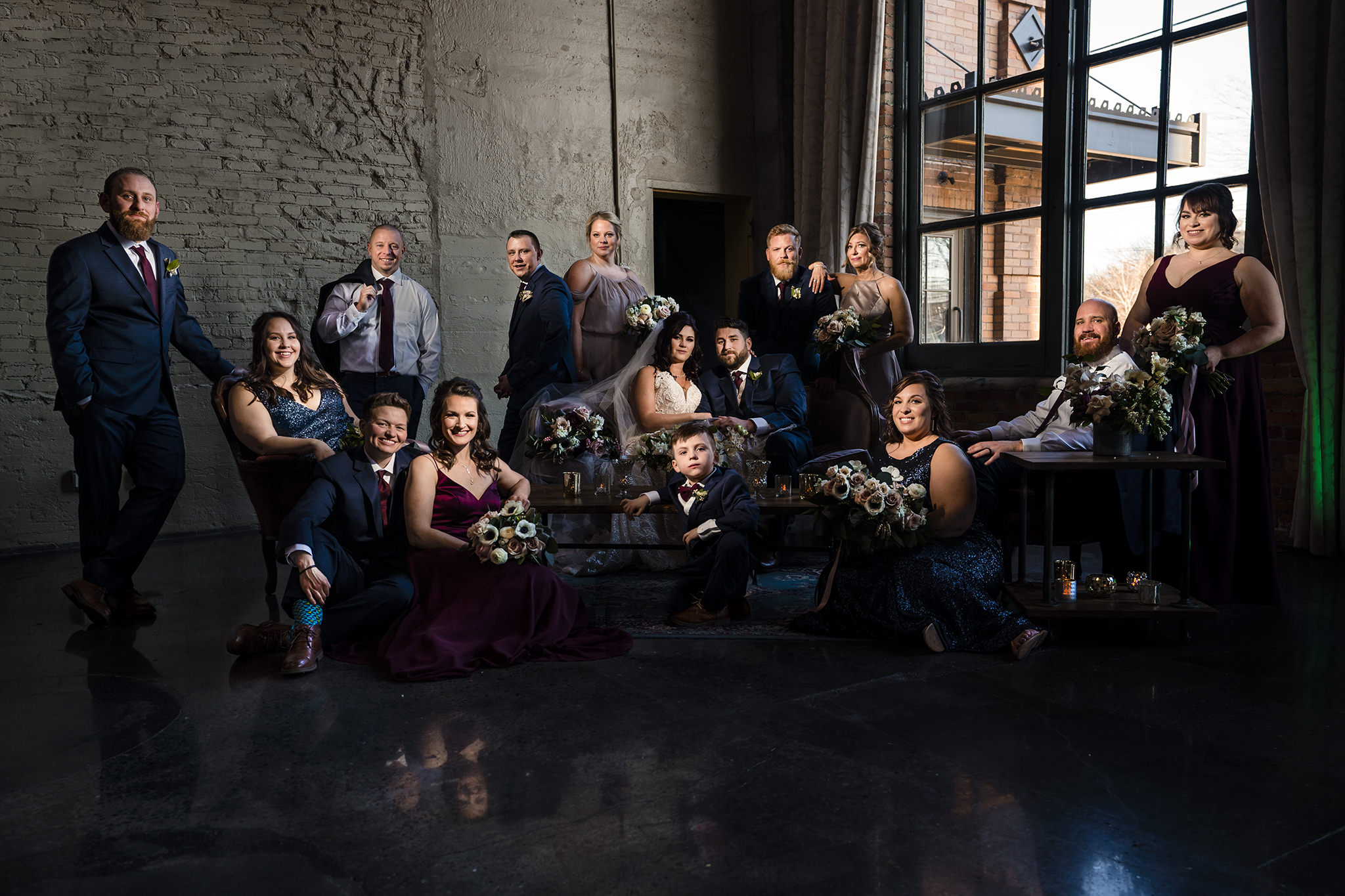
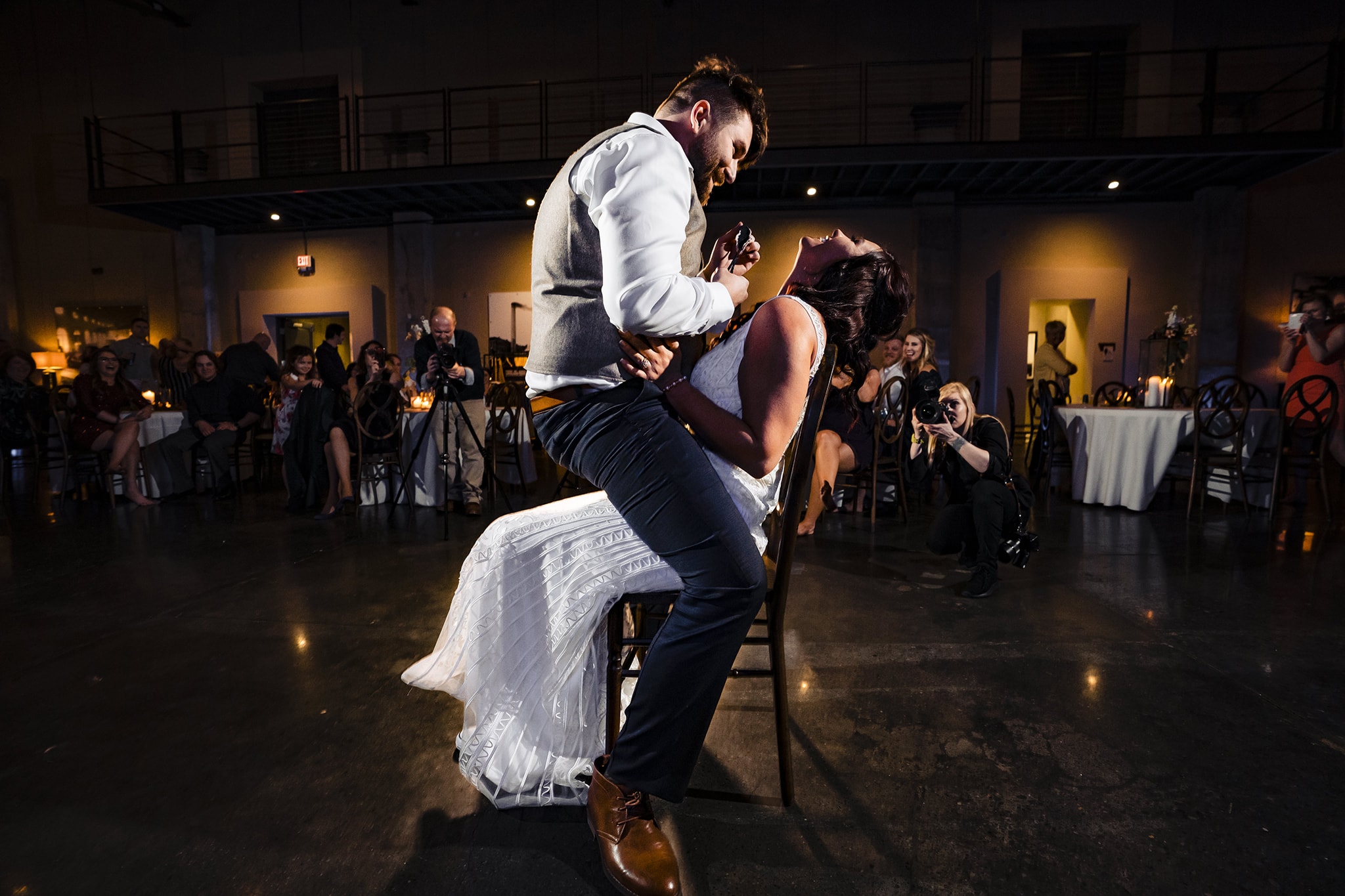
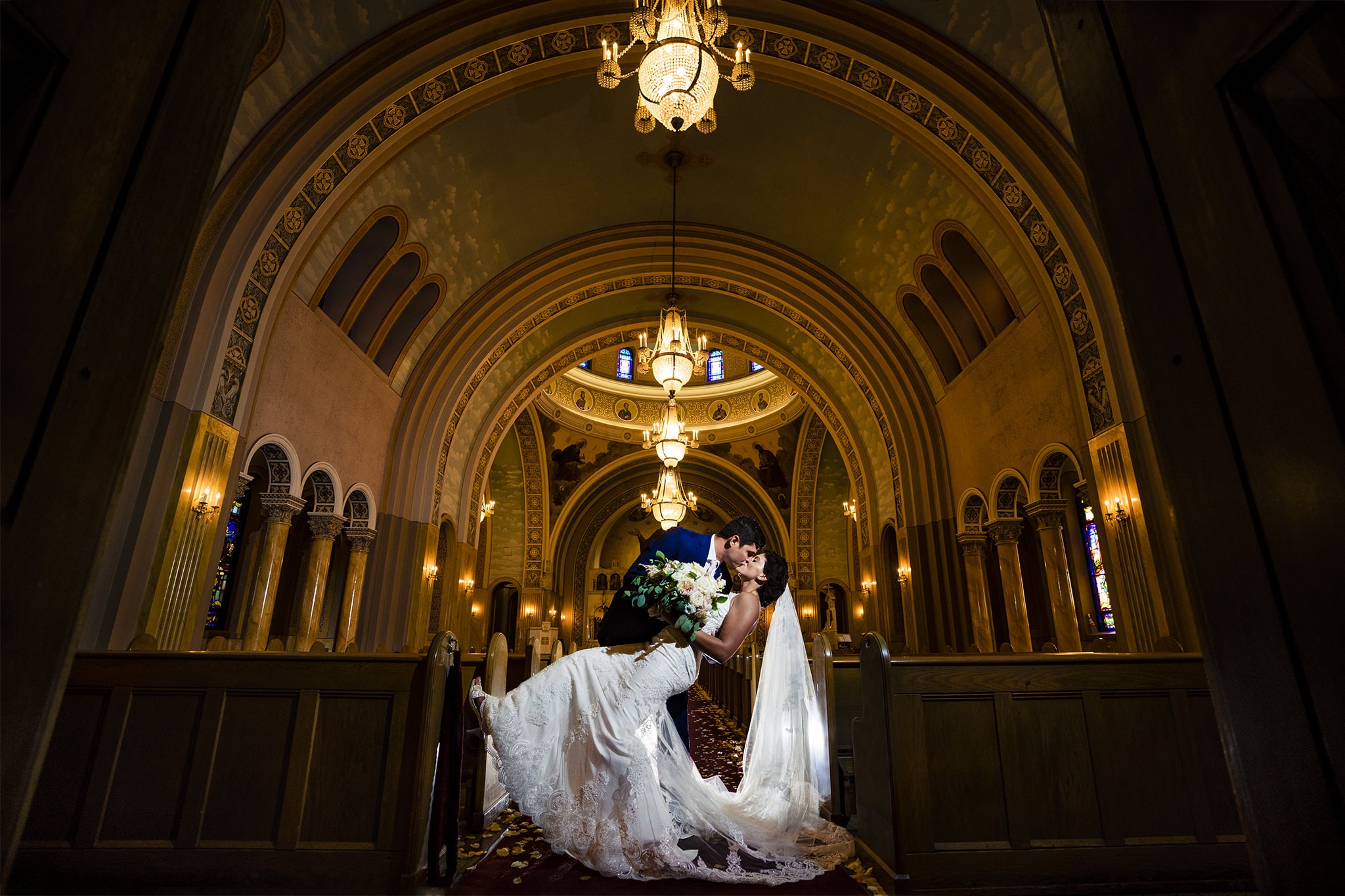
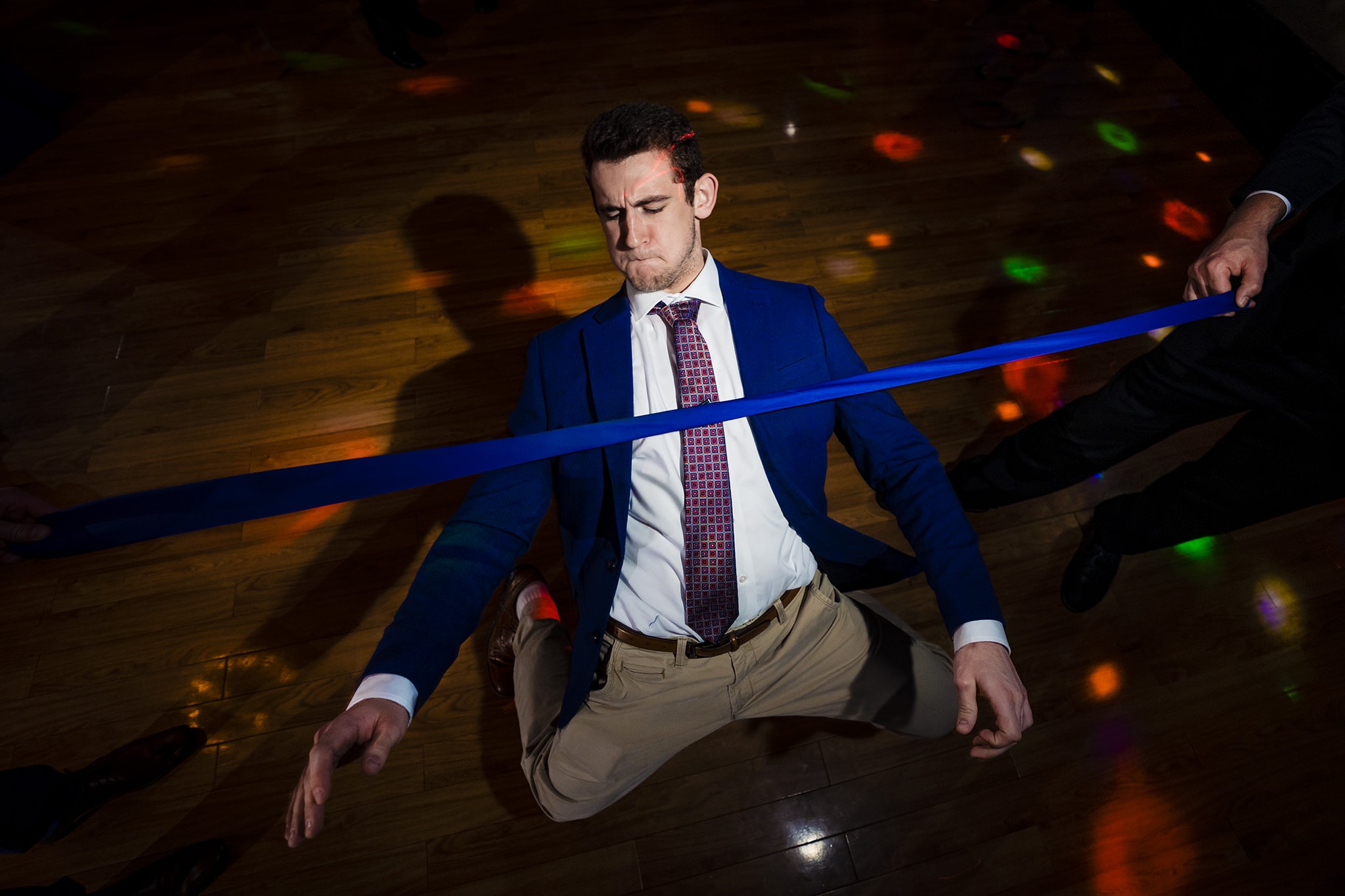




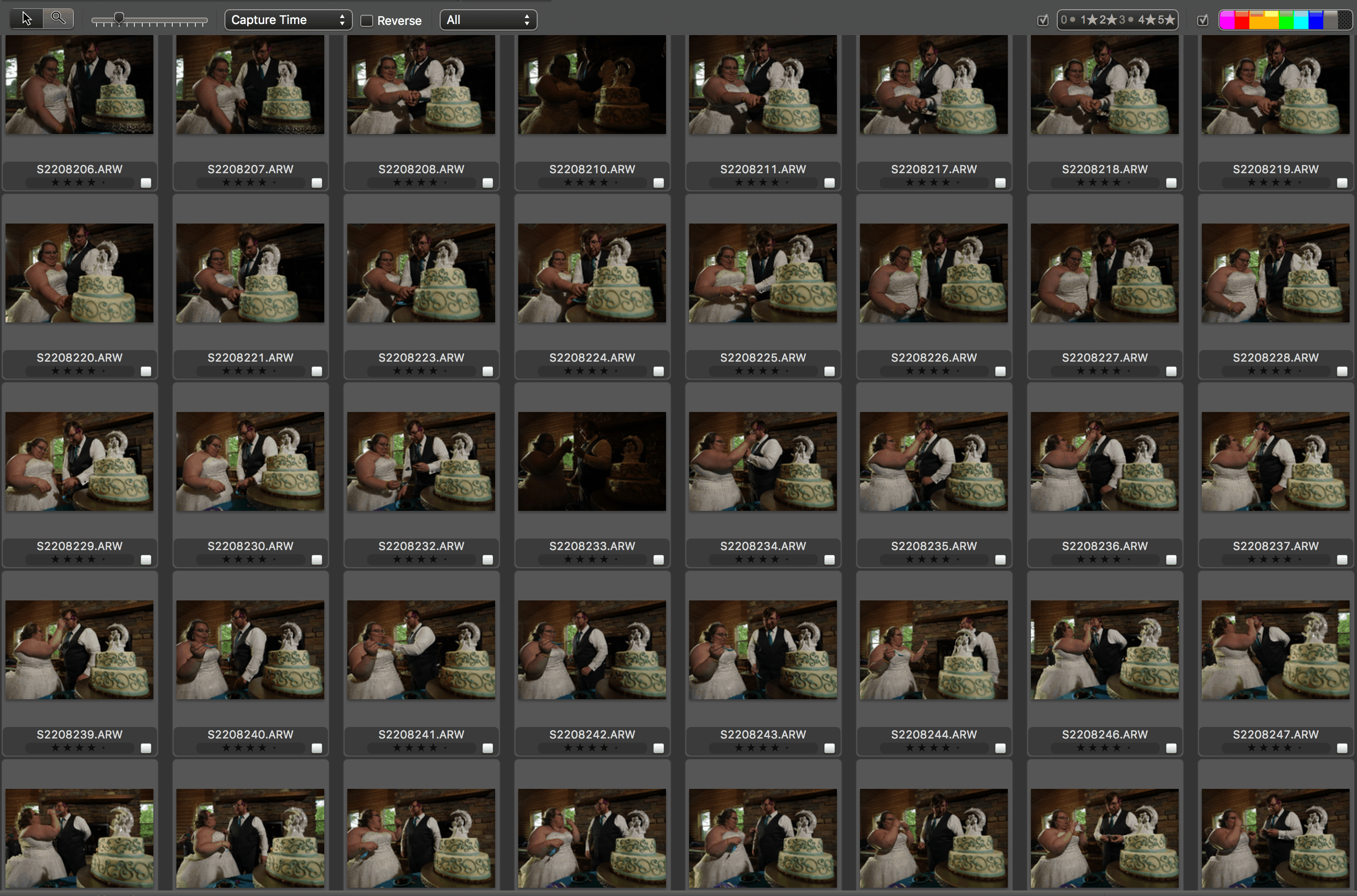
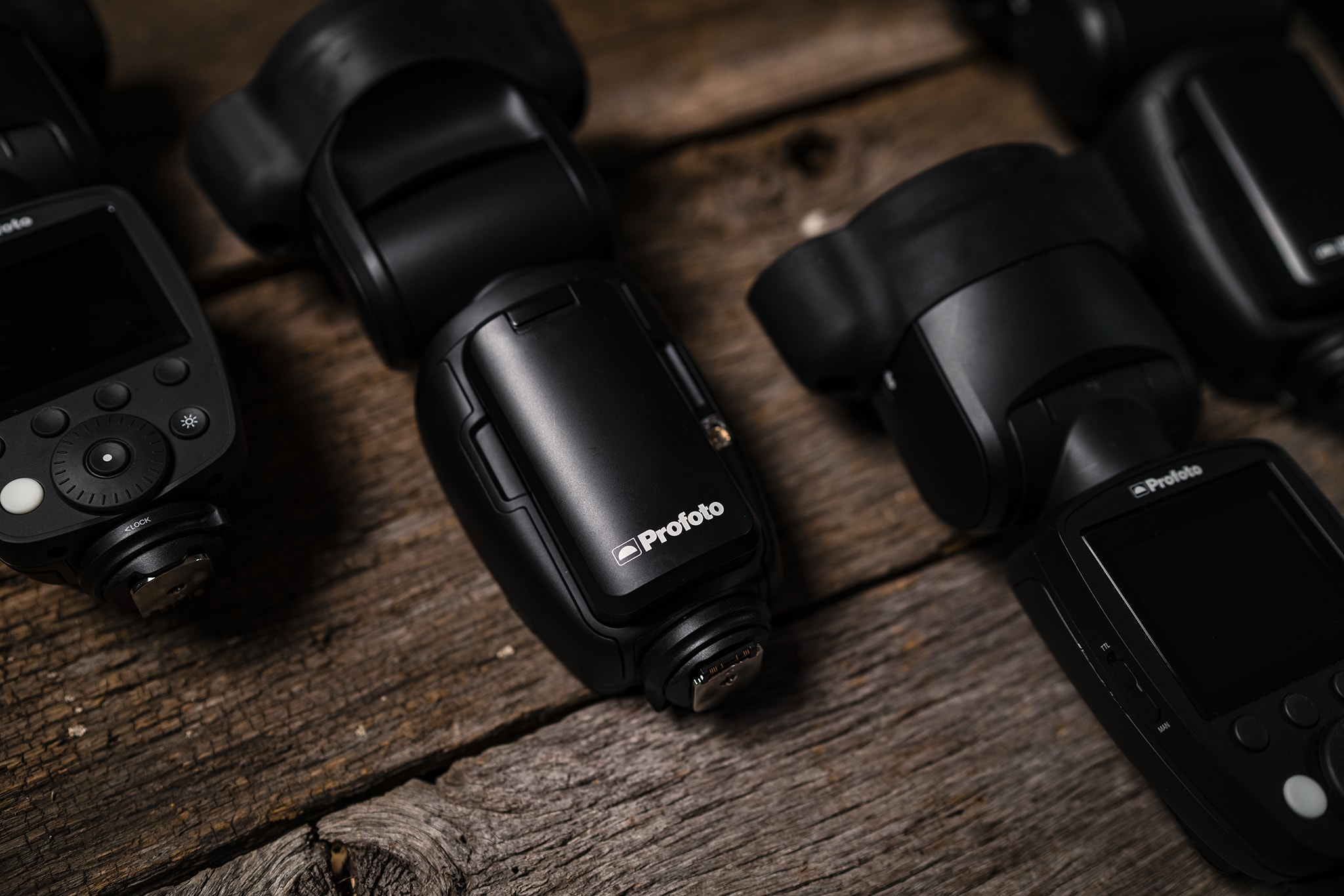

Have you use the Magmod gels and Mag Sphere with the A1 ?
Hey Alejandro! I do use the MagMod gear with the A1Xs, and it’s seamless. I love that I can keep using the gear with the round heads. They also work fine with the circular head of the Godox flashes as well. Go for it!
Wow 5 A1x! I just picked up the magmod kit that was on sale this past week. I notice that it fits well. However, do you ever feel the need to change to focus beam? Because I notice with the maggrip there isn’t a way to turn it once it’s on
Actually, if you go into the menu settings, there is an option to choose the beam spread right there! That’s what I do with the MagGrips on, and it’s been super helpful. I generally keep my beam fairly narrow to imitate a MagGrid, and then add a Grid if necessary to really control the light. It’s been great.
Great article, I currently have two B10 and 1 A1X, would you recommend getting another A1X or another B10? I am a wedding and engagement photographer.
Hey Jay! Awesome to hear from you. It really depends on your shooting style and what you prefer, but for me, I really enjoy the small size of the A1Xs. I have 2 B10s and 5 A1Xs myself.